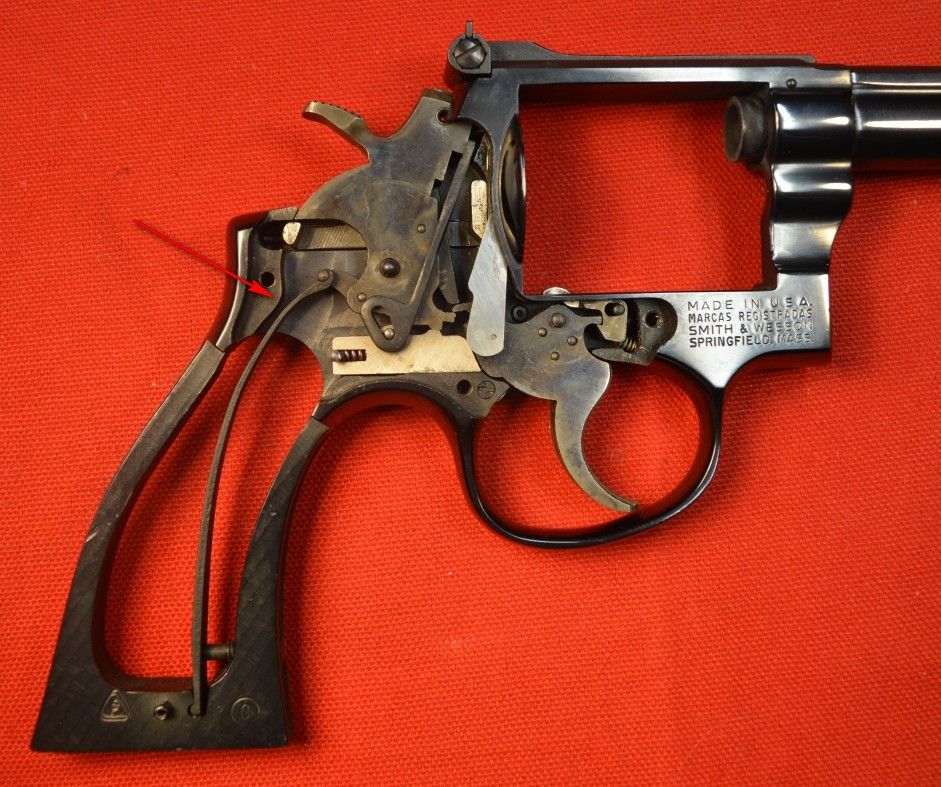Howdy
For the record, I have been known to back the strain screw out a half turn or so on some of my Smiths. Yeah, I know it is not recommended. I also know that the screw could perhaps loosen more from vibration. I do not carry these revolvers for self defense, they are range toys, so I am not too worried about reliability. I can always tighten the screw back all the way. In general, I do not back out the strain screw. I do most of my shooting single action, so I am not too concerned with how hard it is too pull the trigger to cock the hammer.
It also should be mentioned that if the screw is backed out too far (or shortened too much) the arc described by the main spring can become a problem. Relieve the strain screw too much and the spring will bind on the frame. What happens is that as the strain is relieved on the spring, it relaxes a bit and straightens out a bit, no longer forming the tight curve it forms when the strain screw is tightened all the way. Back the screw out enough, and the spring will bind on the frame where the arrow is in this photo. You can test this yourself, just keep backing the screw out and at some point you will notice it suddenly gets more difficult to bring the hammer to full cock as the spring binds on the frame. Don't overdo it, you might over stress the spring.

I might also mention that reducing the stress on the main spring will also have the effect of reducing single action trigger pull. This is because with the spring shoving the hammer full cock notch against the sear, there is less friction to overcome as the sear slides out of the full cock notch. This can result in a noticeable reduction in trigger pull. Generally speaking, modern (I mean made anytime after 1899) S&W double action revolvers have such terrific single action trigger pulls that this trick is not necessary. However I have used it to good effect in some of my Single Action CAS revolvers. Installing a lighter main spring will also have the same effect. Yes, I suppose I could do the 'right thing' and have a smith smooth up and slightly stone down the full cock notch on my hammers, and I have done that with a few of my single actions. But I recently purchased a S&W New Model Number Three made in 1896. It had a very heavy trigger pull, considerably heavier than a similar gun. Very few spare parts are available for these guns. Rather than grind down the original hammer spring to lighten its strength, I instead backed out the strain screw about 1/2 turn. This had the desired effect of lightening the trigger pull slightly, and I did not have to perhaps ruin a hard to find old spring.

